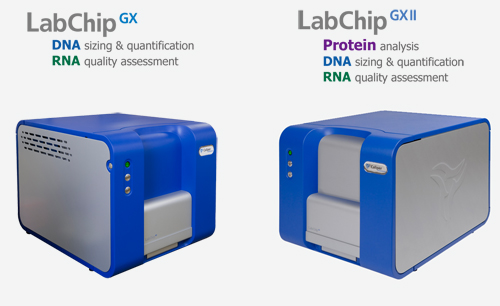In the first quarter of 2008, Kevin Hrusovsky, President and CEO of Caliper Life Sciences, described “exciting new microfluidic product and development opportunities” coming down the pipeline.
Microfluidics, the precise control and manipulation of fluids that are geometrically constrained to a small, typically sub-millimeter, scale, is the basis of Caliper’s LabChip (lab-on-a-chip) System.
In 2007, the company achieved 10% combined product and service growth in microfluidics, supported by the continuing growth of Caliper’s LabChip 90 instruments. This week, Caliper announced a complete functional replacement of the LabChip 90 system, the new LabChip GX and GXII platforms.
The LabChip GX represents a low price entry system targeted at genomics applications, while the GXII combines both genomics and protein research applications. The LabChip GX series is designed to provide scientists benefits that include extended walk away time, higher throughput and economical plate processing ability.

A unique feature of the LabChip GX is its ability to analyze any single sample, or subset of samples, in a microtiter plate using an intuitive graphical interface. The data management software allows users to visualize results in a “virtual” gel view. Additionally, it provides data in tabular form, which can then be analyzed or easily exported into Excel.
“LabChip GX and GXII represent an integral component of Caliper Life Sciences’ overall strategy of developing products that bridge the in vitro – in vivo translational gap. The [products] provide high quality, accurate, and reproducible data,” said Rick Bunch, Microfluidics Product Manager at Caliper.
During the remainder of 2008, the company plans drive productivity improvement in microfluidics R&D by consolidating its West Coast facilities. Potential areas of exploration include forensics and molecular diagnostics.
Caliper will offer the technology though both direct and indirect distribution channels. The company anticipates approximately 15% revenue growth per year (over the next several years) from microfluidics products and services.